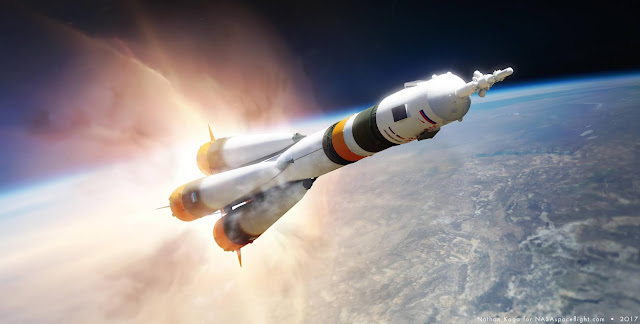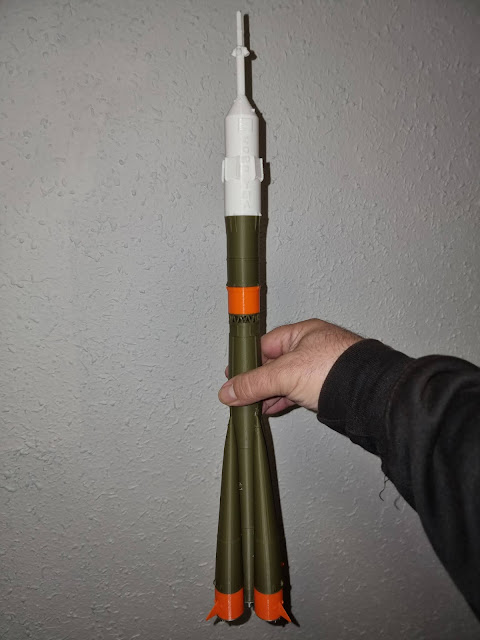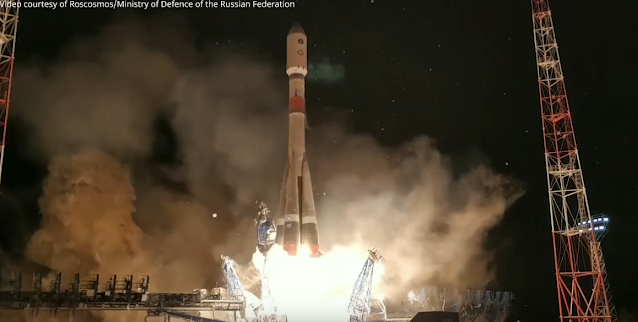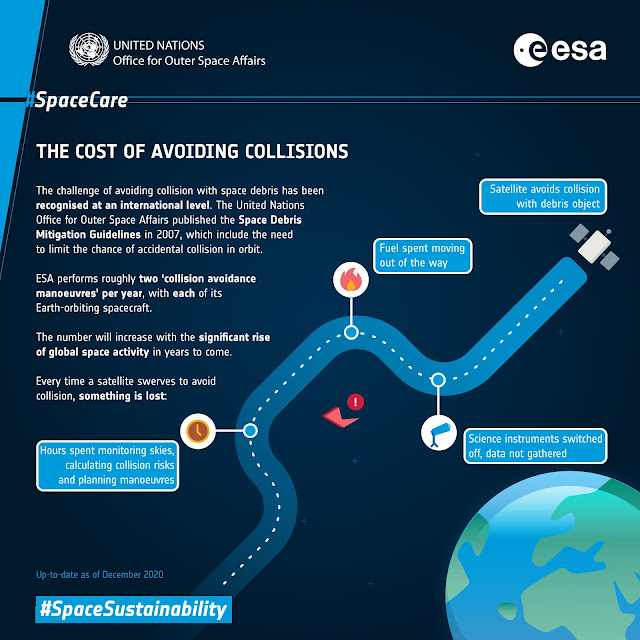CCCP - Soyuz Rocket patch.
Nov. 27, 2021
55 years ago, on November 28, 1966, the first launch of the Soyuz carrier rocket with the unmanned Soyuz spacecraft was performed from the Baikonur cosmodrome. The Soyuz launch vehicle became the basis for its numerous modifications: Soyuz-U, Soyuz-FG, Soyuz-2. Rockets of this family have become a reliable support for Russian astronautics.
Soyuz FG first launch
The Soyuz is undoubtedly the most famous Russian launch vehicle. It is easily recognizable by the four conical side blocks of the first stage, the characteristic head fairing with four rectangles of lattice fins and the graceful "turret" of the emergency rescue system (on manned launches).
After successful launches of Vostok carrier rockets in 1963, Chief Designer of OKB-1 (now the Energia Rocket and Space Corporation, part of the Roscosmos State Corporation) Sergey Korolev began developing a new direction in manned astronautics. Considered not only simple flights with passive rendezvous of ships in orbit, but also long-term group flights with active rendezvous and docking, the transition of astronauts from ship to ship. To support these tasks, OKB-1 created a spacecraft with new engines and a control system, more comfortable flight conditions for cosmonauts (a utility compartment was introduced into the design) and, accordingly, having a large mass.
Soyuz rocket family
The most powerful rocket at that time was the Voskhod rocket. Nevertheless, its power-to-weight ratio was not enough for the implementation of new space programs. In parallel with the creation of a new spacecraft at OKB-1 by its branch No. 3 in Kuibyshev (now the Progress Rocket and Space Center, part of Roscosmos), work was underway to create a new generation of automatic spacecraft of the Zenit-4MT type, which also required an increase in energy carrier. In addition, there was an acute issue of equipping a manned spacecraft with an active emergency rescue system. So the need arose to develop a new modification of the launch vehicle. She received the name "Union".
By the mid-1960s, all design documentation for the R-7 and R-7A missiles was transferred from the Podlipki near Moscow to Kuibyshev by order of Sergei Korolev. Therefore, in accordance with the Decree of the Government of December 3, 1963, a new three-stage medium-class launch vehicle began to be developed by specialists of branch No. 3 of OKB-1 under the leadership of Dmitry Kozlov. The launch vehicle "Voskhod" with the spacecraft "Voskhod-1" and the world's first crew of three cosmonauts has not yet been launched. Aleksey Leonov had not yet made a spacewalk from the Voskhod-2 spacecraft, and the Kuibyshev designers had already developed a new launch vehicle, which awaited a long and happy fate of the main rocket of the domestic manned cosmonautics.
Soyuz FG
The Soyuz launch vehicle was created on the basis of the Voskhod rocket. The modernization of the three stages was carried out by branch No. 3 of OKB-1. Outwardly, the rocket stages remained practically unchanged, but in terms of their characteristics it was a completely different rocket. As a result of the measures taken, the specific thrust of the first stage engines was increased, the control system of the third stage was modernized and the on-board cable network was significantly lightened. In addition, a new type of emergency rescue system has been developed. She provided the rescue of the crew in the event of a launch vehicle accident both at the launch pad and at any stage of the flight. The structural and layout scheme of the SAS became the base for all modifications of launch vehicles and spacecraft of the Soyuz series, and has survived to this day, although it has been modernized several times over the course of many years of operation.
Soyuz FG
On October 26, 1968, the first manned launch of the Soyuz carrier rocket took place from the Baikonur cosmodrome. The Soyuz-3 spacecraft with cosmonaut Georgy Beregov was launched into orbit. More than half a century has passed, but even now Russian spacecraft are sent into space on the most reliable rocket in the world, which bears the name "Soyuz" (Union).
Soyuz FG roll-out
At present, preparations for the next manned launch are underway at the Baikonur cosmodrome. The launch of the Soyuz-2.1a carrier rocket with the Soyuz MS-20 spacecraft is scheduled for December 8, 2021 at 10:38 Moscow time. The flight to the International Space Station will last 12 days under a contract with Space Adventures. The commander of the prime crew is Roscosmos cosmonaut Alexander Misurkin, while Yusaku Maezawa, president of the Start Today corporation, and Yozo Hirano, Yusaku Maezawa's personal assistant, are appointed to the prime crew.
Soyuz FG 3D printing
Order your Soyuz FG scale model (1/100) online (you can also specify a smaller or larger model) via Orbiter 3D Printing: https://www.impresion3d.shop
Related links:
ROSCOSMOS Press Release: https://www.roscosmos.ru/33464/
RSC Energia: https://www.roscosmos.ru/tag/rkk-ehnergija/
RCC Progress: https://www.roscosmos.ru/tag/rkc-progress/
Images, Text, Credits: ROSCOSMOS/RSC Energia/Orbiter.ch Aerospace/Orbiter 3D/Roland Berga.
Best regards, Orbiter.ch



















































